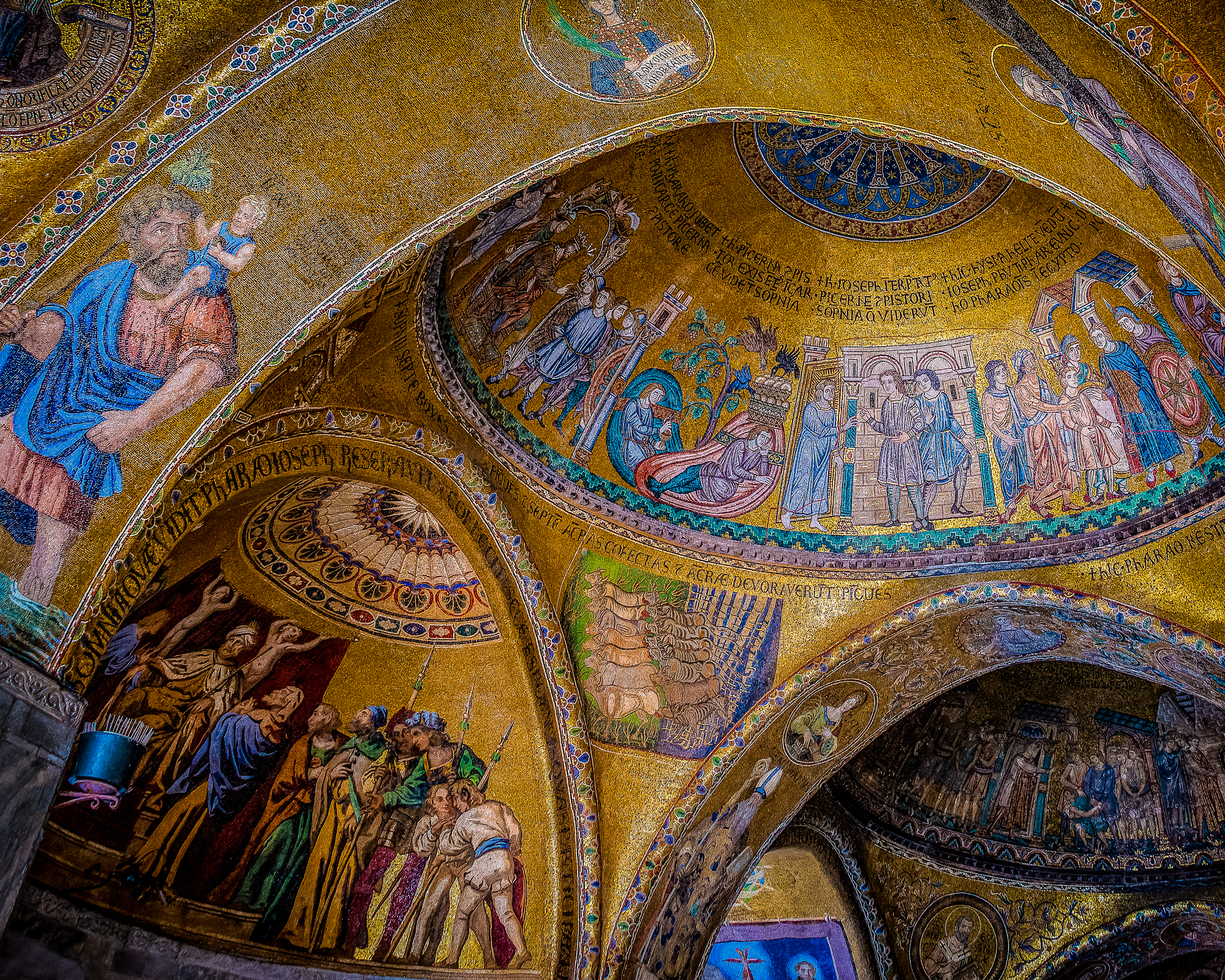The Contrast
USA: Dinner, a drive, a movie, a drive...to bed.
Venice: Dinner...lingering over dinner...a stroll through quiet streets...orchestral music on the Piazza San Marco until the midnight bell tolls...to bed.
“Three of the restaurants on the Piazza have orchestra stands from which music entertains you througout the evening”
There is a big difference between the evenings in Italy and in the US.
Dinner in Italy is unhurried. There is no rush. Your dinner partner(s) and waitstaff are your entertainment. Each course arrives at just the appropriate time. The wine level in the bottle seems to lower at just the right pace. There is no rush. A grappa will be offered at some point after dessert. There is no rush. There is no rush. You've finally gotten it through your head...there is no rush. You won't receive your bill until you ask for it...'Il Conto, per favore'. Never were you rushed. This is your evening.
And after dinner? When the sun dims, the evening begins to shine for us. The heat of the day has been lifted. Campos which were full of vendors during the day have been miraculously cleared for outdoor dining. People are laughing and having a good time. After dinner, those fortunate to stay overnight in Venice are heading to Piazza San Marco for the nightly concert...or should I say, concerts.
The Piazza
There is only one gathering space in Venice large enough to be called a 'piazza' -- the rest are piazzetta or campo. Surrounded on three sides by consistent city buildings and on the fourth by the Basilica San Marco, Piazza San Marco is huge.
Here is a photo of the Piazza that was taken in January from the balcony of the Basilica...if you haven't been to Venice, trust me that only in the winter will you find so few people here.
Panorama of Piazza San Marco taken from the balcony of Basilica San Marco
The Campanile
Note that you can see the base of the Campanile (bell tower) in the photo. Here is the top of the Campanile, where the bell is located. The bell tolls an important event in your evening.
Original Campanile in ruins after its collapse
But, this is not the original campanile which was completed in 1514. Here is a photo of the original campanile, after its collapse on July 14, 1902 at 9:45am. Not as tall as it was the day before. Today's campanile was completed in 1912. And alas, though there were 5 bells (all tuned to a different octave of 'A') in the original campanile, each named and having its own tolling function, four of the bells were destroyed in the disaster, so that today there is only one bell.
A few of the pigeons of the Piazza
One of the joys...I guess it's a joy...are the pigeons of the piazza. In the past, one could purchase bird feed to attract these pesky birds. But, the wise city fathers have now prohibited the act to try to reduce the number of pigeons on the piazza.
Concert Time
In the two photos below, which were taken in the evening from the Campanile, you see the sights of your entertainment for the evening.
Western end of the Piazza San Marco
North side of the Piazza San Marco
Three of the restaurants on the Piazza have orchestra stands from which music entertains you througout the evening. On the left in the top photo is the Caffe Florian. In the lower photo are Ristorante Quadri on the left and Cafe Lavena on the right.
To avoid the cacophony of sound that would result from all of the orchestras playing at the same time, they take turns. So, if you stand in the middle of the Piazza, you can wander from one side to the other to enjoy the music. Want to dance with your partner? Go ahead. Want to sit down for a cappuccino or soda? Go ahead, but expect to pay a hefty cover charge. But either way, you will enjoy the evening of music.
Here are some photos of the musicians as they make their music...just for you.
The orchestra of Caffe Florian
The Evening's End
At midnight, all will be finished. You will know the time by the one, solitary tolling of the Marangona bell of the campanile. It's now time to return to your hotel. Tomorrow will bring many more memories for the two of you in the world's most magical city.
No dinner and a movie here...just dinner and memories to last a life time.
Ciao for now,
Steve























